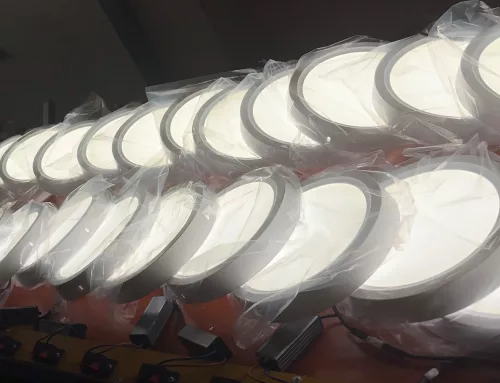The first difference between incandescent lamps and LED lamps is the light-emitting principle. Incandescent lamps are also called electric light bulbs. Its working principle is that heat is generated when the current passes through the filament (tungsten filament, the melting point is more than 3000 degrees Celsius). When it is in the state, it emits light like red-hot iron can emit light. The higher the temperature of the filament, the brighter the light emitted. It is called incandescent lamp. When an incandescent lamp emits light, a large amount of electrical energy is converted into heat energy, and only a very small portion (perhaps less than 1%) can be converted into useful light energy.
The light emitted by incandescent lamps is full-color light, but the composition ratio of each color light is determined by the luminescent material (tungsten) and temperature. The unbalanced ratio leads to the color cast of the light 1 color, so the color of the object is not realistic enough under the incandescent lamp.
The life of an incandescent lamp is related to the temperature of the filament, because the higher the temperature, the easier the filament will sublimate. The process of blackening at both ends of the fluorescent lamp is: the sublimation of the tungsten wire directly becomes tungsten gas, and the tungsten gas is sublimated on the lamp tube wall when it encounters the lower temperature lamp tube and turns black. When the tungsten wire sublimates to a relatively thin When it is energized, it is easy to burn out, thus ending the life of the lamp, so the power of the incandescent lamp should be large.
LED lights, also known as light-emitting diodes, are solid-state semiconductor devices that can directly convert electricity into light. The heart of the LED is a semiconductor chip, one end of the chip is attached to a bracket, one end is the negative electrode, and the other end is connected to the positive electrode of the power supply, so that the entire chip is encapsulated by epoxy resin.
The semiconductor wafer consists of three parts, one part is a P-type semiconductor, in which holes dominate, the other end is an N-type semiconductor, which is mainly electrons, and the middle is usually a quantum well of 1 to 5 periods. When the current acts on the wafer through the wire, the electrons and holes will be pushed into the quantum well, and the electrons and holes will recombine in the quantum well, and then will emit energy in the form of photons, which is the principle of LED light emission.
The second difference is that the heat radiation generated by the two is different. The heat of an incandescent lamp can be felt in a short period of time. The greater the power, the more heat. The electrical energy is converted partly to light and partly to heat. When people are very close, they can clearly feel the heat emitted by the incandescent lamp.
LED electric energy converts light energy, and generates very little heat radiation, most of the ability is directly converted into light energy, and the power of general lamps is low, coupled with the heat dissipation structure, compared with incandescent lamps, the heat radiation of LED cold light sources is better.
The third difference is that the lights emitted by the two are different. The light emitted by incandescent lamps is full-color light, but the composition ratio of each color light is determined by the luminescent material and temperature. The unbalanced ratio causes the color cast of the light, so the color of the object is not realistic enough under the incandescent light.
LED is a green light source. The LED lamp is DC driven, has no stroboscopic, and has no infrared and ultraviolet components, no radiation pollution, relatively high color rendering and strong luminous directionality.
Not only that, the dimming performance of LED lights is good, no visual error will occur when the color temperature changes, and the cold light source has low calorific value and can be touched safely. It can not only provide a comfortable lighting space, but also a good It is a healthy light source that protects eyesight and is environmentally friendly to meet people’s physical health needs.
Compared with traditional incandescent light bulbs, LED lamps on the market are favored and praised by more and more young consumers because of their green environmental protection, high cost performance, reliable performance, excellent quality and long service life. On the one hand, it can meet the basic lighting needs like incandescent light bulbs. On the other hand, it eliminates the troublesome problems of our later maintenance and replacement operations. I believe that the future use and development prospects are also very good. Interested friends are best to choose this product.

